《The Principles and Methods of Physical Diagnosis》
| 作者 | 编者 |
|---|---|
| 出版 | W.B.Saunders Company |
| 参考页数 | 430 |
| 出版时间 | 1952(求助前请核对) 目录预览 |
| ISBN号 | 无 — 求助条款 |
| PDF编号 | 812505528(仅供预览,未存储实际文件) |
| 求助格式 | 扫描PDF(若分多册发行,每次仅能受理1册) |

CHAPTER ⅠROUTINE DATA1
METHODS OF PHYSICAL DIAGNOSIS1
Temperature1
Oral Temperature1
Rectal Temperature2
Pathogenesis of Fever2
Effect of Ovulation on Temperature2
Types of Fever3
Subnormal Temperature4
The Pulse4
Pulse Rate4
Pulse Tension5
Respiration6
Types of Breathing6
Blood Pressure9
Blood Pressure Technic and Equipment9
Height and Weight10
Race10
Childhood Nutrition11
Climatic Factors11
General Evolution11
Effects of Disease on Height11
Achondroplasia11
Heart Disease12
Renal Disease12
Progeria12
Ateliotic Dwarfs12
Gigantism13
Hypogonadism13
Hypergonadism13
Ovarian Insufficiency13
Weight14
Habitus14
Male and Female Body Types16
REFERENCES16
CHAPTER ⅡEXAMINATION OF THE HEAD17
THE CRANIUM17
Size and Shape17
Microcephalus17
Hydrocephalus17
The Acromegalic Head18
Paget's Disease(Osteitis Deformans)19
Craniostoses19
The Rachitic Head21
THE HAIR AND SCALP21
Alopecia21
Hirsutism(Hypertrichosis)22
THE FACE24
Dehydration of the Face24
Edema of the Face24
Color of the Face27
Anemia27
Polycythemia28
Cyanosis of the Face29
Malar Flush29
Pigmentation of the Face30
Jaundice30
Argyria30
Mask of Pregnancy(Chloasma Gravidarum)30
Hemochromatosis30
Addison's Disease31
Albinism(Congenital Achromodermia)32
Vitiligo32
Chrysiasis32
Local and Systemic Diseases Manifested in the Face32
Nevi(Birthmarks)32
Acne Vulgaris(Common Acne)33
Collagen Diseases34
Periarteritis Nodosa34
Disseminated Lupus Erythematosus35
Scleroderma35
The Facies of Diseases of the Endocrine Glands37
Cretinism37
Mongolian Idiocy38
Myxedema(Mucus Edema)38
Hyperthyroidism39
THE EYES39
The Eyelids43
The Conjunctiva44
Subconjunctival Hemorrhage45
The Cornea46
Corneal Sensitivity46
Keratitis46
Herpetic Lesions47
Arcus Senilis47
The Sclera48
Osteogenesis Imperfecta(Fragilitas Ossium)48
Intraocular Tension48
The Pupils48
Horner's Syndrome49
The Palpebral Fissures50
Exophthalmos50
Strabismus(Squint)52
Nystagmus54
The Visual Field54
THE EARS54
Color54
Contour54
Auricles54
The Auditory Canal55
Tympanic Membrane55
Mastoid Region56
Tests for Hearing56
THE NOSE56
Play of the Alae Nasi58
Intranasal Examination58
THE LIPS59
THE BUCCAL CAVITY62
Eruptions62
Pigmentation62
THE TONGUE62
Monilial Infections64
Leukoplakia(White Plaque)66
Syphilitic Lesions66
Tuberculosis of the Tongue67
Carcinoma of the Tongue67
THE TEETH AND GUMS68
Hutchinson's Teeth69
Hypertrophy of the Gums70
Gingivitis70
Lead Line72
THE BREATH72
THE TONSILS73
THE PHARYNX74
THE PALATE AND UVULA74
THE LARYNX75
Tuberculosis of the Larynx76
Tumors of the Larynx76
Paralysis of the Vocal Cords76
REFERENCES76
CHAPTER ⅢEXAMINATION OF THE NECK78
CERVICAL LYMPHADENOPATHY80
INFECTIONS81
Acute Regional Infections81
Acute Systemic Infections81
Chronic Systemic Infections82
Tuberculosis82
Sarcoidosis83
ALLERGIC REACTIONS83
Serum Sickness83
PRIMARY LYMPH NODE DISEASES83
Leukemia86
Metastatic Lymphadenopathy86
THE SALIVARY GLANDS86
Tumors of the Salivary Glands87
THE THYROID GLAND87
Anomalies of the Thyroid87
Intrathoracic(Substernal)Goiter88
Simple Goiter(Colloid Goiter)88
Toxic Goiter90
Nodular Goiters91
Thyroid Malignancy91
Acute Thyroiditis91
VASCULAR PULSATIONS IN THE NECK92
DISTENTION OF THE VEINS OF THE NECK93
REFERENCES93
CHAPTER ⅣEXAMINATION OF THE MUSCULOSKELETAL SYSTEM95
EXAMINATION OF THE MUSCLES95
EXAMINATION OF THE JOINTS107
The Shoulder Joint108
Motions108
Lesions109
The Elbow Joint111
The Wrist Joint113
Lesions113
The Hip Joint115
Motions116
Lesions117
The Knee Joint120
Lesions121
The Ankle Joint123
Lesions123
The Foot124
Deformities125
The Back128
Spinal Curvature128
Scoliosis129
Low Back Pain131
REFERENCES133
CHAPTER ⅤEXAMINATION OF THE BREASTS134
SELF-EXAMINATION134
PHYSICAL EXAMINATION135
Carcinoma138
Gynecomastia142
Tuberculosis of the Breast142
REFERENCES143
CHAPTER ⅥSOUNDS FROM THE THORAX:ACOUSTIC PRINCIPLES&by S.Reid Warren,Jr Sc.D.in E.E144
SOUNDS PRODUCED IN THE THORAX145
Percussion145
Auscultation145
Electrical Pickups146
Preliminary Conclusions148
PRODUCTION AND PROPAGATION OF SOUND148
What Sound Is148
Kinds of Sounds149
Sounds in Media Other than Air151
Attenuation,Absorption and Reflection151
Reflection and Viscosity151
Attenuation and the Stethoscope152
Thoracic Sounds:Frequency Range152
Sensations of Sounds153
Loudness153
Intensity153
Physical Aspects of Hearing155
Audibility of Sounds156
Ambient Sounds157
Pitch of Sounds157
Loudness of Sounds157
Timbre157
Location of Sounds157
SOURCES OF SOUND IN THE THORAX158
Circulatory System:Loudness and Frequency Range158
Respiratory System:Loudness and Frequency Range158
Vocal Sounds158
Percussion158
Interpretation159
CONCLUSIONS159
REFERENCES160
CHAPTER ⅦEXAMINATION OF THE CHEST161
ROENTGENOLOGIC VERSUS PHYSICAL EXAMINATION163
INSPECTION OF THE CHEST165
Beside Inspection166
Conformation of the Normal Chest166
Size and Development of the Chest169
Asymmetry of the Chest170
Shape and Movement of the Subcostal Angle173
Local Bulging and Pulsations of the Thorax173
Abnormal Thoracic Conformation176
The Rachitic Chest176
The Long Flat Chest(Pterygoid Chest,Alar Chest)178
The Emphysematous(Barrel-Shaped)Chest179
REFERENCES181
CHAPTER ⅧPALPATION OF THE CHEST182
TECHNIC OF PALPATION182
VOCAL FREMITUS183
Voice Production184
Production of Fremitus184
Tactile Vibrations186
REFERENCE186
CHAPTER ⅨPERCUSSION OF THE CHEST187
TECHNIC OF PERCUSSION188
Diaphragmatic Excursion189
PERCUSSION SOUNDS189
Tympany189
Modified Tympany190
Metallic Ring190
Bell Tympany191
Cracked-Pot Sound191
Resonance192
Hyperresonance192
Dullness192
Flatness192
PERCUSSION RESISTANCE192
OTHER PERCUSSION METHODS192
Orthopercussion193
Auscultatory Percussion193
MOVABLE OR SHIFTING DULLNESS195
REFERENCES195
CHAPTER ⅩAUSCULTATION OF THE CHEST196
Effect of Posture197
The Stethoscope197
NORMAL BREATH SOUNDS197
Laryngeal or Bronchial Element of the Breath Sounds197
Vesicular Element of the Breath Sounds198
Vesicular Breath Sounds199
ABNORMAL BREATH SOUNDS200
Absent Breath Sounds200
Decreased Breath Sounds200
Exaggerated Breathing200
Bronchial Breathing200
Bronchovesicular Breathing201
Cavernous Breathing201
Amphoric Breathing201
ADVENTITIOUS SOUNDS202
Rales202
Musical Rales202
Crepitant(Consonating)Rales202
Subcrepitant(Crackling)Rales202
Bubbling(Gurgling)Rales203
Marginal(Atelectatic)Rales203
Production of Rales203
Friction Sounds204
Succussion Splash204
Metallic Tinkle204
VOICE SOUNDS205
Vocal Resonance205
Bronchophony205
Pectoriloquy205
Egophony206
REFERENCES206
CHAPTER ⅪPHYSICAL SIGNS IN CERTAIN DISEASES OF THE LUNGS AND PLEURA:CORRELATIVE DATA207
DISEASES OF THE LUNGS207
Pulmonary Tuberculosis207
Lobar Pneumonia207
Auscultation209
Physical Signs209
Bronchiectasis209
Bronchial Asthma210
Interstitial Emphysema211
Massive Collapse of the Lung212
Physical Signs212
Inspection212
Palpation212
Percussion212
Auscultation213
Pulmonary Embolism213
Physical Signs213
Pulmonary(Venous)Air Embolism213
Arterial Air Embolism217
DISEASES OF THE PLEURA218
Dry Pleurisy218
Inspection218
Palpation218
Percussion219
Auscultation219
Diaphragmatic Pleurisy219
Epidemic Pleurodynia(Bornholm Disease,Devil's Grip)219
Pleural Effusion220
Inspection220
Palpation220
Percussion220
Auscultation223
Loculated Pleural Fluid224
REFERENCES227
CHAPTER ⅫEXAMINATION OF THE CIRCULATORY SYSTEM228
BLOOD PRESSURE228
Normal Arterial Blood Pressure228
High Blood Pressure(Arterial Hypertension)229
Low Blood Pressure(Vascular Hypotension)229
Pulse Pressure230
Venous Blood Pressure230
THE HEART230
The Valves231
Inspection234
Palpation236
Normal Position of the Cardiac Impulse239
Displacement of the Cardiac Impulse239
Thrills240
Percussion240
Heart Size240
Method242
Cardiac Dullness245
Significance of Cardiac Dullness246
Percussion versus Roentgenology247
Auscultation251
Valve Areas251
Heart Sounds252
Origin and Characteristics of Heart Sounds252
The First Sound252
The Second Sound253
The Third Sound253
Increased Intensity of the First Sound253
Decreased Intensity of the First Sound253
Increased Intensity of the Second Sound254
Splitting or Reduplication of Heart Sounds254
Gallop Rhythm254
Heart Murmurs255
Intensity256
Cardiac Arrhythmias257
Sinus Arrhythmia258
Sinus Pauses258
Auricular and Ventricular Premature Beats258
Paroxysmal Auricular Tachycardia259
Auricular Flutter259
Auricular Fibrillation259
Paroxysmal Ventricular Tachycardia260
Ventricular Fibrillation260
Heart Block261
First Degree Heart Block261
Second Degree Block(Partial Block)261
Third Degree Block(Complete Block)261
Pulsus Alternans262
REFERENCES262
CHAPTER ⅩⅢPHYSICAL SIGNS IN CERTAIN DISEASES OF THE HEART AND GREAT VESSELS:CORRELATIVE DATA264
VALVULAR DISEASES264
Mitral Regurgitation(Insufficiency)264
Mitral Stenosis264
Aortic Insufficiency267
Physical Signs268
Inspection268
Palpation269
Percussion271
Auscultation271
Interpretation272
Aortic Stenosis272
Physical Signs273
Inspection and Percussion273
Palpation274
Auscultation274
Tricuspid Insufficiency275
Physical Signs275
Inspection275
Palpation275
Percussion276
Auscultation276
Tricuspid Stenosis277
Pulmonary Insufficiency277
Pulmonary Stenosis277
Transmission of Murmurs277
The Continuous Murmur278
CONGENITAL CARDIAC AND VASCULAR DEFECTS279
Patent Ductus Arteriosus279
Coarctation of the Aorta279
Aberrant Right Subclavian Artery280
Interventricular Septal Defect(Roger's Disease)283
Eisenmenger's Complex283
Tetralogy of Fallot284
Patent Foramen Ovale285
MISCELLANEOUS CONDITIONS286
Pericardial Effusion286
Physical Signs286
Inspection286
Palpation288
Percussion290
Auscultation291
Cor Pulmonale291
Ayerza's Disease292
Xiphosternal Crunch293
REFERENCES294
CHAPTER ⅩⅣEXAMINATION OF THE ABDOMEN295
Position of the Patient295
Regions of Abdomen295
Surface Markings296
INSPECTION OF THE ABDOMEN296
Visible Peristalsis296
Bodily Movements296
The Skin297
Rashes297
Contour297
Enlarged and Tortuous Veins298
Hirsutism and Hair Distribution298
Abdominal Pulsations298
Respiratory Movements of the Abdomen299
Abdominal Asymmetry299
Examination of the Umbilicus300
Abdominal Hernias300
Ventral Hernia300
Umbilical Hernia301
Inguinal Hernia301
Femoral Hernia302
Diaphragmatic Hernia302
PALPATION OF THE ABDOMEN302
Muscular Rigidity303
Tenderness303
Parietal Pain303
Intercostal Neuralgia304
Fluctuation304
Ascites304
Tumors305
Palpation of the Liver306
Technic307
Palpation of the Spleen307
Technic308
Palpation of the Kidneys309
PERCUSSION OF THE ABDOMEN310
AUSCULTATION OF THE ABDOMEN310
REFERENCES310
CHAPTER ⅩⅤTHE GYNECOLOGIC EXAMINATION311
EXAMINATION OF THE PATIENT311
Position of the Patient311
Position of the Examiner314
Technic314
EXTERNAL GENITALIA314
Mons Veneris315
Clitoris315
Labia Majora315
Labia Minora315
Vulva315
Bartholin's Glands315
Perineal Body316
Vestibule316
Urethral Meatus317
Skene's Ducts317
Hymen317
VAGINA AND ITS CONTENTS318
Speculum Examination318
Technic318
Cervix320
Vagina323
Vaginitis323
Vaginal Walls323
Descensus Uteri325
Palpation325
Bimanual Examination327
Uterus328
Position328
Size,Shape and Consistency328
Motion329
Adnexa330
Hydrosalpinx330
Ectopic Pregnancy330
Tumors330
Endometriosis331
Parovarian Cyst332
Parametrium332
Special Tests332
Papanicolaou Smears332
Rubin Test332
Hysterosalping-ography332
Cervical Biopsy333
Sperm Analysis333
Huhner Test333
Hanging Drop Preparations333
Tests for Gonococci333
REFERENCES333
CHAPTER ⅩⅥEXAMINATION OF THE MALE GENITALIA,AND OF THE ANUS,RECTUM AND RECTOSIGMOID COLON334
MALE GENITALIA334
Size and Development334
Hypogonadism334
Hypergonadism334
Congenital Anomalies335
Hypospadias335
Epispadias335
Incomplete Descent of One or Both Testes335
Congenital Hydrocele335
Lesions of the Penis335
Phimosis335
Chancre335
Chancroid335
Lymphopathia Venereum(Lymphogranuloma Inguinale)337
The Testes and Scrotum338
Hydrocele339
Varicocele339
Prostate and Seminal Vesicles339
ANUS,RECTUM AND RECTOSIGMOID COLON339
Digital Examination339
Preparation339
Position339
Equipment339
Anus and Rectum340
Inspection and Palpation340
Prostate and Seminal Vesicles342
Prostate342
Carcinoma of the Prostate343
Seminal Vesicles343
Proctosigmoidoscopy344
Preparation344
Position344
Equipment345
Conduct of the Examination345
Anoscopy347
REFERENCES347
CHAPTER ⅩⅦEXAMINATION OF THE EXTREMITIES348
NUTRITIONAL,METABOLIC AND ENDOCRINE DISORDERS MANIFESTED IN THE EXTREMITIES348
Rickets348
Pellagra349
Scurvy349
Acromegaly349
Paget's Disease(Osteitis Deformans)349
Gout350
THE EXTREMITIES IN CERTAIN SYSTEMIC INFECTIONS AND DEGENERATIVE STATES351
Rheumatic Fever351
Subacute Bacterial Endocarditis352
Gonococcal Arthritis352
Rheumatoid Arthritis353
(Arthritis Deformans)353
Hypertrophic Arthritis(Osteoarthritis,Senile Arthritis)353
Tuberculous Arthritis354
Tuberculous Osteomyelitis354
Syphilis354
Charcot's Joint355
CLUBBING OF THE FINGERS AND TOES AND HYPERTROPHIC PULMONARY OSTEOARTHROPATHY355
Symmetrical Clubbing356
Pulmonary Diseases356
Cardiac Diseases358
Hepatic and Gastrointestinal Diseases359
Unilateral Clubbing359
Unidigital Clubbing359
MISCELLANEOUS CONDITIONS359
Tetany359
Dupuytren's Contracture360
Volkmann's Ischemic Contracture360
Ganglia of the Wrist360
Carphologia360
Edema of the Extremities360
Acute Lymphangitis362
THE PERIPHERAL ARTERIES362
Palpation362
Peripheral Arteriosclerosis363
Thromboangiitis Obliterans(Buerger's Disease)363
Arterial Embolism363
Exposure to Cold364
Raynaud's Disease364
Raynaud's Phenomenon365
PERIPHERAL VEINS365
Varicose Veins365
Thrombophlebitis365
Phlebothrombosis366
REFERENCES366
CHAPTER ⅩⅧNEUROLOGIC EXAMINATION367
ANATOMIC AND PHYSIOLOGIC CONSIDERATIONS367
Voluntary Motor System367
Voluntary Motor Control367
Tone368
Sensory System368
Coordination369
Special Senses369
Gnostic Functions369
Psychologic Component370
PRACTICAL METHODS OF EXAMINATION AND INTERPRETATIONS OF INDIVIDUAL FINDINGS370
Involuntary Movements370
Fibrillations(Fasciculations)370
Tremors370
Choreiform Movements371
Athetoid Movements371
Dystonic Movements371
Spasms371
Tics(Habit Spasms)372
Convulsive Seizures372
Posture,Gait and Station372
Posture372
Gait372
Station373
Meningeal Irritation374
The Head374
The Cranial Nerves374
First Nerve374
Second,Third,Fourth and Sixth Nerves375
Fifth Nerve375
Seventh Nerve376
Eighth Nerve378
Ninth Nerve380
Tenth Nerve380
Eleventh Nerve380
Twelfth Nerve381
The Neck381
The Back and Trunk382
The Extremities383
Upper Extremities383
Coordination383
Palpation of Muscles384
Atrophy of Muscles384
Muscle Strength384
Nerve Lesions384
Muscle Tone385
Reflexes385
Sensory Determination386
Lower Extremities387
Reflexes390
Coordination391
Sensory Determination392
NEUROLOGIC EVALUATION392
REFERENCES393
CHAPTER ⅩⅨPSYCHIATRIC SURVEY394
MENTAL STATUS394
General Attitude of the Patient395
Memory395
Orientation396
Stream of Thought396
Disturbances of Perception397
Association of Ideas397
Judgment398
Mood398
Anxiety399
Apathy399
Depression399
Elation400
Other Moods400
Special Preoccupations400
Phobias,Obsessions and Compulsions400
Insight401
REFERENCES402
CHAPTER ⅩⅩTHE HISTORY403
Physician-Patient Rapport403
Use of Understandable Words404
Patient Personalities404
TECHNIC OF HISTORY TAKING404
History of Present Illness405
Systemic Review405
Past Medical History406
Occupational History406
Social History407
Family History407
REFERENCES407
INDEX409
1952《The Principles and Methods of Physical Diagnosis》由于是年代较久的资料都绝版了,几乎不可能购买到实物。如果大家为了学习确实需要,可向博主求助其电子版PDF文件(由 1952 W.B.Saunders Company 出版的版本) 。对合法合规的求助,我会当即受理并将下载地址发送给你。
高度相关资料
-
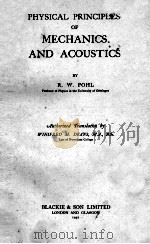
- PHYSICAL PRINCIPLES OF MECHANICS AND ACOUSTICS
- 1932 BLACKIE & SON LIMITED
-

- PRINCIPLES AND METHODS OF STATISTICS
- 1925 HOUGHTON MIFFLIN COMPANY
-

- PRINCIPLES AND METHODS OF STATISTICS
- 1925 HOUGHTON MIFFLIN COMPANY
-
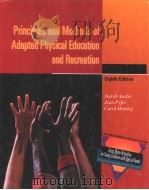
- PRINCIPLES AND METHODS OF ADAPTED PHYSICAL EDUCATION AND RECREATION EIGHTH EDITION
- 1997年 BROWN AND BENCHMARK
-
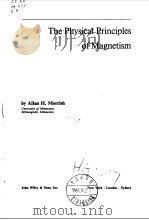
- THE PHYSICAL PRINCIPLES OF MAGNETISM
- 1965 JOHN WILEY & SONS INC
-

- THE PRINCIPLES AND METHODS OF PHYSICAL DIAGNOSIS SECOND EDITION
- 1957 W.B.SAUNDERS COMPANY
-

- THE PHYSICAL PRINCIPLES OF NEURONAL AND ORGANISMIC BEHAVIOR
- 1973 GORDON AND BREACH SCIENCE PUBLISHERS
-

- THE PRINCIPLES AND APPLICATIONS OF VARIATIONAL METHODS
- 1964 THE M.I.T.PRESS
-
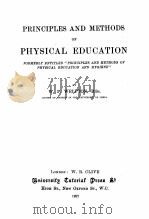
- PRINCIPLES AND METHODS OF PHYSICAL EDUCATION
- 1927 UNIVERSITY TUTORIAL PRESS LTD.
-
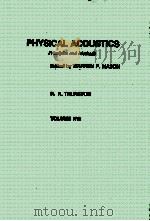
- PHYSICAL ACOUSTICS PRINCIPLES AND METHODS VOLUME 16
- 1982 ACADEMIC PRESS
-

- ATLAS OF HAEMATOLOGY AND THE PRINCIPLES OF DIAGNOSIS OF BLOOD DISEASES
- POLISH STATE MEDICAL PUBLISHERS
-
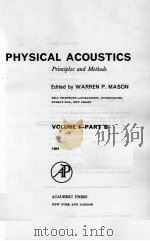
- PHYSICAL ACOUSTICS: PRINCIPLES AND METHODS VOLUME I-PART B
- 1964 ACADEMIC PRESS
-

- PHYSICAL ACOUSTICS: PRINCIPLES AND METHODS VOLUME X
- 1973 ACADEMIC PRESS
-
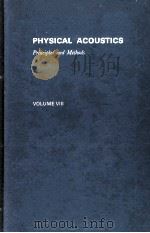
- PHYSICAL ACOUSTICS: PRINCIPLES AND METHODS VOLUME VIII
- 1971 ACADEMIC PRESS
提示:百度云已更名为百度网盘(百度盘),天翼云盘、微盘下载地址……暂未提供。➥ PDF文字可复制化或转WORD
